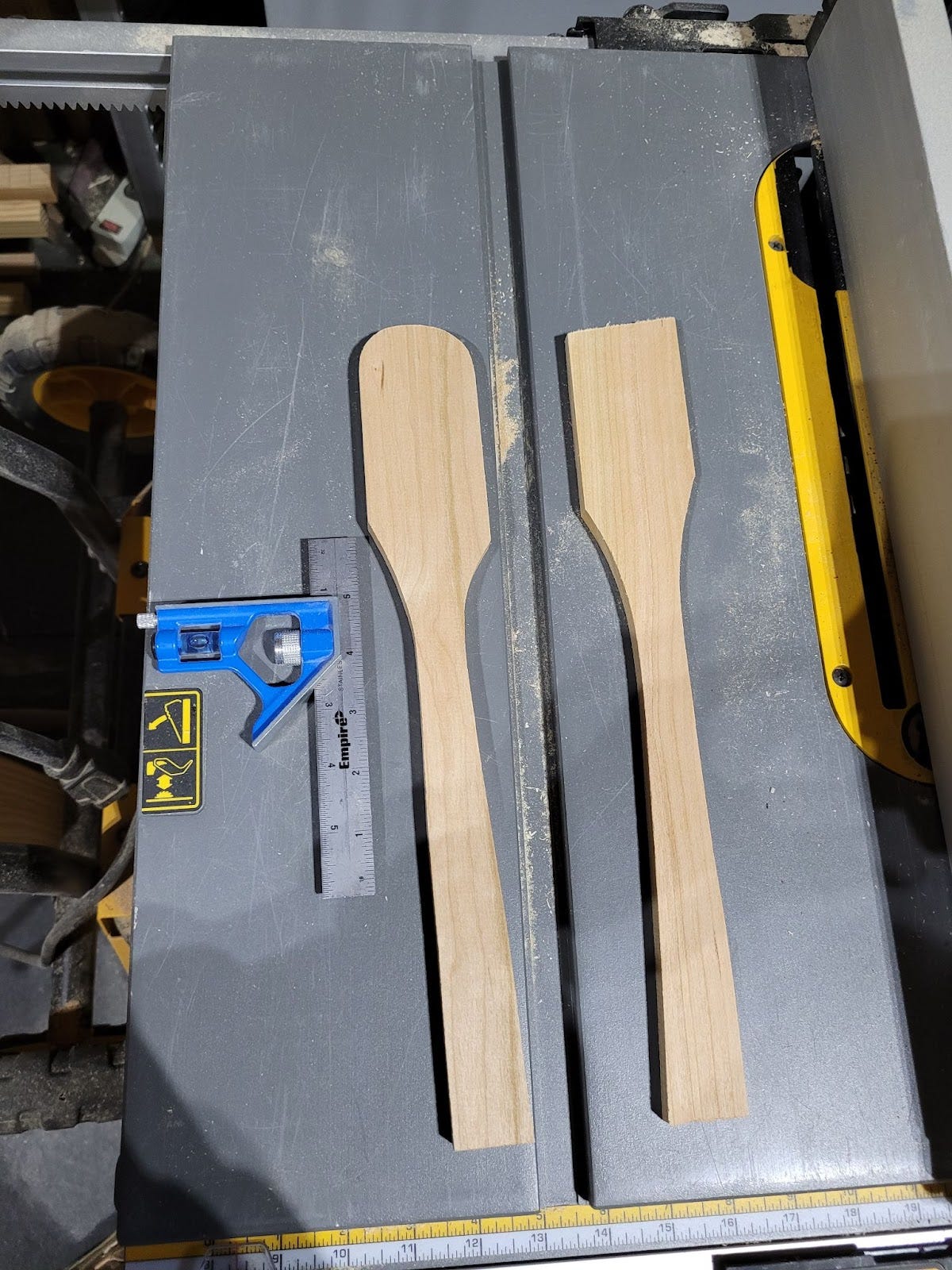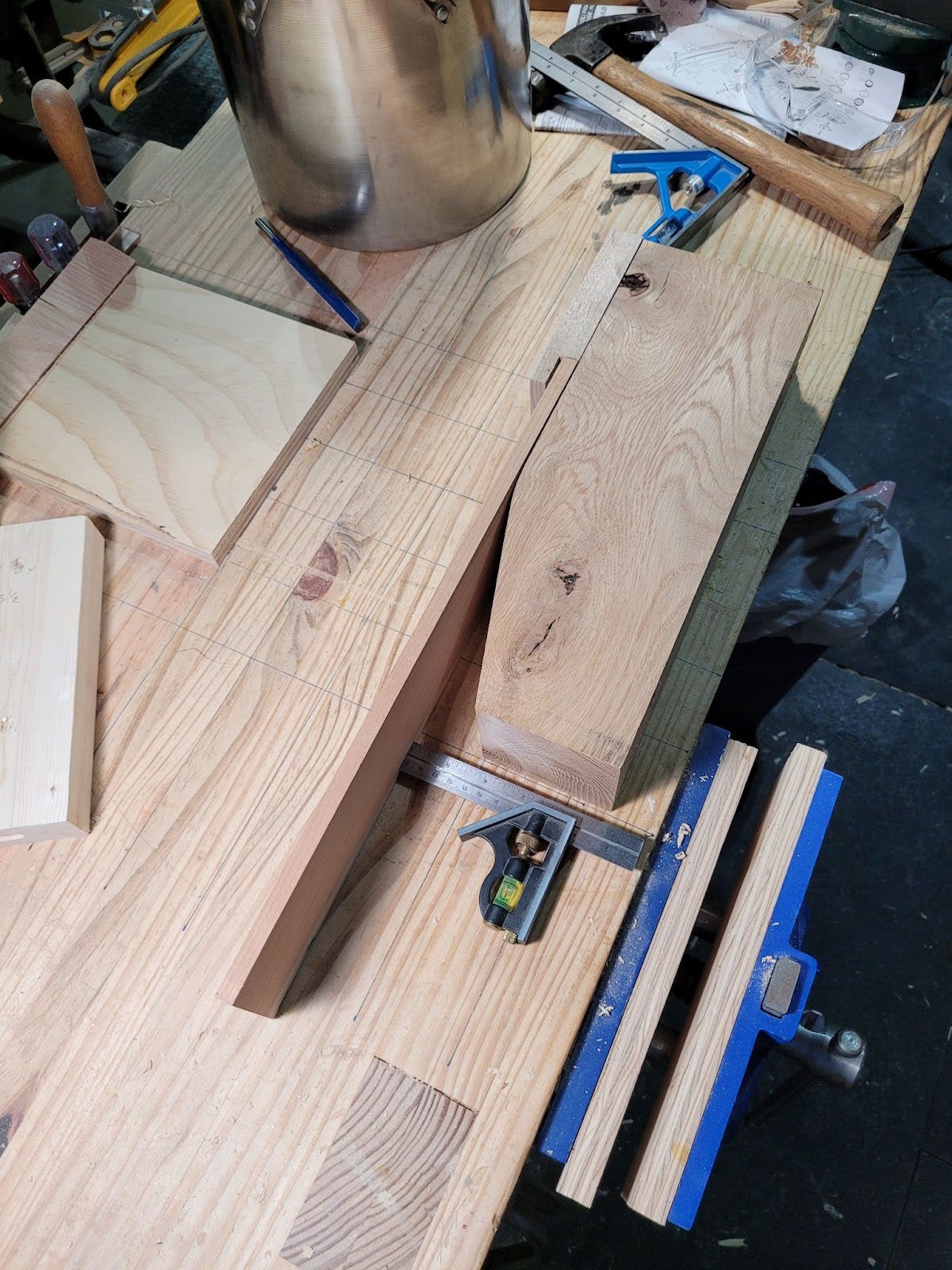Choosing a project for my students includes thinking of the learning objectives. What do I want the students to learn? One of the first power tools that I teach is the bandsaw. Such a versatile tool that truly doesn’t get enough credit in the shop. Many beginners start with the compound miter saw and table saw and honestly, I did too. I just wasn’t exposed to how versatile the bandsaw is (self-taught in the early years) and frankly, many box stores don’t do a good job of having a selection worthy of drawing interest. I do have to say though, when I finally got a bandsaw, I was able to take my woodworking to a different level.
I also wanted to teach students how to shape wood without using the belt sander. Students LOVE the belt sander if given a choice to use it. It has led to sloppy measuring and cutting and then trying to use the belt sander to make things right. I decided to teach them how to use rasps, files, and sandpaper. Not only does it slow them down and help them to concentrate on accurately cutting but it also teaches them tools that are more cost efficient, take up less space, and I believe are more versatile. They could buy several very nice rasps for the price of a belt sander.
So spatulas were chosen. (And when I call it a spatula, one is actually a turner but no one is familiar with that term so from here on out, they’re both called a spatula.) I enjoy projects that allow for creativity and diversity and I also enjoy projects that are adaptable to a range of tools and hopefully, the students can do this at home. This project allows for both. If you don’t want to use tools that I use, don’t. Simple as that.
I have two different styles of spatulas. A more traditional turner for flipping stuff and then a mixing spatula. Again, adapt the shape to your needs. And if you come up with an amazing design and patent it and sell it for millions of dollars, don’t forget about your favorite Substack shop teacher…

The only “obstacle” that a newer woodworker could have with the design is that I use ⅜” thick material. I find that it fits the user’s hand better. But using the bandsaw, the person can resaw the material to the desired thickness and then use a sander if that’s all that they had.
With such a “simple” project, there actually is a lot that can be taught from it. I pick and choose what I teach and how I teach according to their age, interest, and setting. I might even break it up into smaller segments throughout the project, touching on it when I think it’s the most relative.
Tool usage. Depends on the tool being used but I always start off here, discussing the parts, safety precautions that will be followed, and PPE to be worn.
Grain direction and strength. Simple version is trees grow up so I want to capitalize on this strength and have the grain run in a certain direction.
Wood fibers. Simple version is that the fibers are like straws and if I use a tool, I want to cut/rasp in the direction where the wood fibers will support each other and not tear out.
Bending. Applying heat and moisture to shape. If tossed in a pot and boiled for 45 minutes or so, the wood can be bent in a form to give your turner a curvature.

Open pore vs closed pore. We tend to want to choose wood that is closed pore so food particles don’t get into the pores.
Form vs function. We can make a fancy spatula but if it doesn’t work well then people won’t want to use it.
Then there’s another list of other topics that can be taught along with it too:
Use of Templates.
Board feet calculations.
Sales.
Marketing.
Manufacturing.
Power tools vs hand tools.
The list goes on and on.
I really enjoy this project because it’s not overly complex. Sometimes, projects that take weeks to build are difficult for beginner woodworkers to tackle. Their endurance hasn’t developed yet so I aim for projects that only take a couple of class periods to make. And as simple as it is, the students really enjoy it since it’s something that they can use daily or give to someone to use. I use spatulas that I’ve made almost daily, depending on what I’m cooking.
So there you go. I hope that you enjoy this project and are able to use it for your “student” as well. If you have any questions about it, please don’t hesitate to ask.
I’m not affiliated with the Shinto Rasp or with Amazon. This is the inexpensive rasp that my students have the best results with and doesn’t break the bank ($23-30). It has a course side and fine side.



